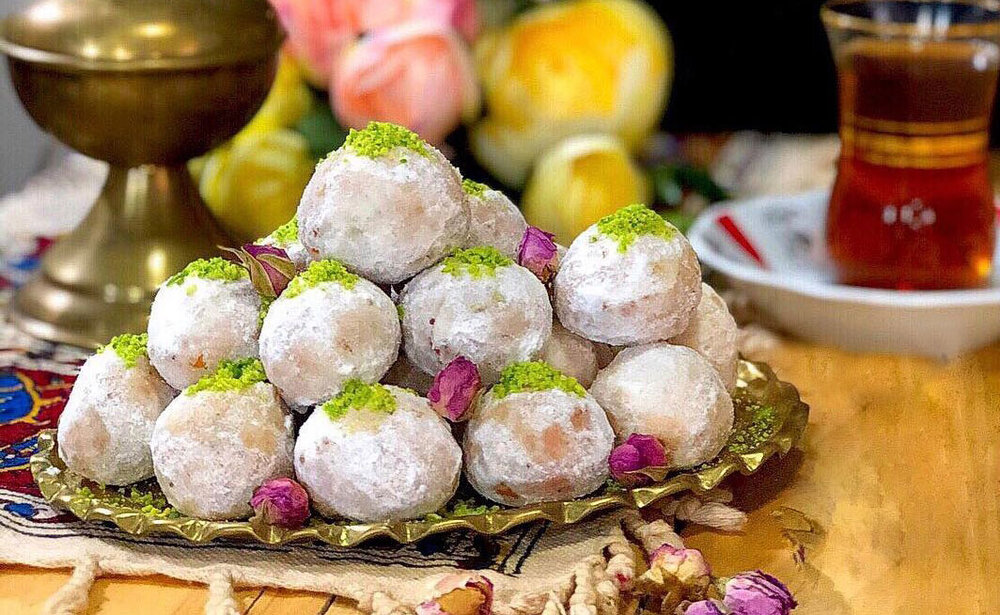Museum of traditional sweets set to open in Yazd

TEHRAN – A museum dedicated to confectionery and traditional sweets is set to be launched in the UNESCO-registered city of Yazd, which is famed for its local foods and edible souvenirs.
The establishment of a confectionery museum in the city of Yazd, which offers wide-ranging traditional sweets under one roof, is on agenda, ISNA quoted Seyyed Alireza Asayesh, who presides over Yazd Confectioners Union, as saying on Sunday.
The museum is expected to directly supply Yazdi sweets to the visitors, provide tens of job opportunities, and add furthert charm to the culinary tourism of the historical city, he noted.
For many tourists, one of the most exciting experiences of visiting a new place is to try its local food and sweets. This trend is especially true for Iran, where almost every city has its own signature food and sweets. Here are the most famed sweets one can find in Yazd:
Qottab
Perhaps the most famous of Yazd sweets throughout Iran is Qottab. This bite-size pastry is made of a thick crispy shell filled with two main variants. The first and the most famous variant is filled with crushed almonds, cardamom, and sugar, while the second is filled with honey.
Due to its exquisite taste and small size, Qottab has a reputation of being so irresistible that people can finish a pack only in one setting.
Cake Yazdi
A national favorite of the Iranians, Yazdi Cake (called Cake Yazdi in Persian) is one of the pastries that almost all Iranians enjoy having with a hot cup of tea. The combination of cardamom and rose water is repeatedly used in Iranian recipes for pastries and it’s also very noticeable in Yazdi sweets.
One can purchase Yazdi Cake in any pastry shop in any city in Iran, but the ones purchased in Yazd are distinct for the flavor that the spices give to them. Ground pistachio is poured over the cakes to give them a beautiful vibrant look with a slightly nutty taste.
Baklava
The worldwide name of Baklava is an umbrella term for dessert pastries using phyllo dough, chopped, or ground nuts, and syrup or honey. Many countries have their unique kind of Baklava. Even in Iran, there are different types of Baklava in different regions such as Qazvin, Tabriz, etc.
Yazdi Baklava is generally dry and is presented in diamond-shaped cuts. The pastry is filled with almonds and pistachios. Instead of honey, it is made with rose water syrup. In comparison to other types of Baklava, the Iranian Baklava is much lighter and the use of cardamom gives it a traditional Iranian taste.
Loz
Another famous sweet made in Yazd, which looks similar to Baqlava but lacks any dough, is called Loz. There are different varieties of Loz depending on the filling. The most famous ones are filled with coconut (Loz-e-nargil), pistachio (Loz-e-peste), almond (Loz-e-badam), or saffron (Loz-e-zaferan).
The variety of Yazd sweets is awe-inspiring. Besides the major ones mentioned above, Yazd sports quite a few other sweets that are worth mentioning. Haji Badam, literally meaning almond haji, are tiny balls made of almonds (badam), sugar, butter, flour, pistachio, and cardamom. Sohan Ardi is Yazd’s special type of Sohan which is less solid to bite and more powdery. Naan-e-Panjereii (literally meaning window-like bread) is the traditional Iranian rosette. Naan-e-Berenji are cookies made of rice flour and garnished with poppy seeds. Pashmak which is Iranian traditional cotton candy. If one is unsure what to choose among the vast variety of options, they can always choose a “mixed” box (makhloot), in which you can find a collection of tasty Yazdi Sweet.
In July 2017, the historical structure of the city of Yazd was named a UNESCO World Heritage. Wedged between the northern Dasht-e Kavir and the southern Dasht-e Lut on a flat plain, the oasis city enjoys a very harmonious public-religious architecture that dates from different eras. Yazd is usually referred to as a delightful place to stay, or a “don't miss” destination by almost all of its visitors. The city is full of mudbrick houses that are equipped with innovative badgirs (wind catchers), atmospheric alleyways, and many Islamic and Iranian monuments that shape its eye-catching city landscape.
AFM/

Leave a Comment